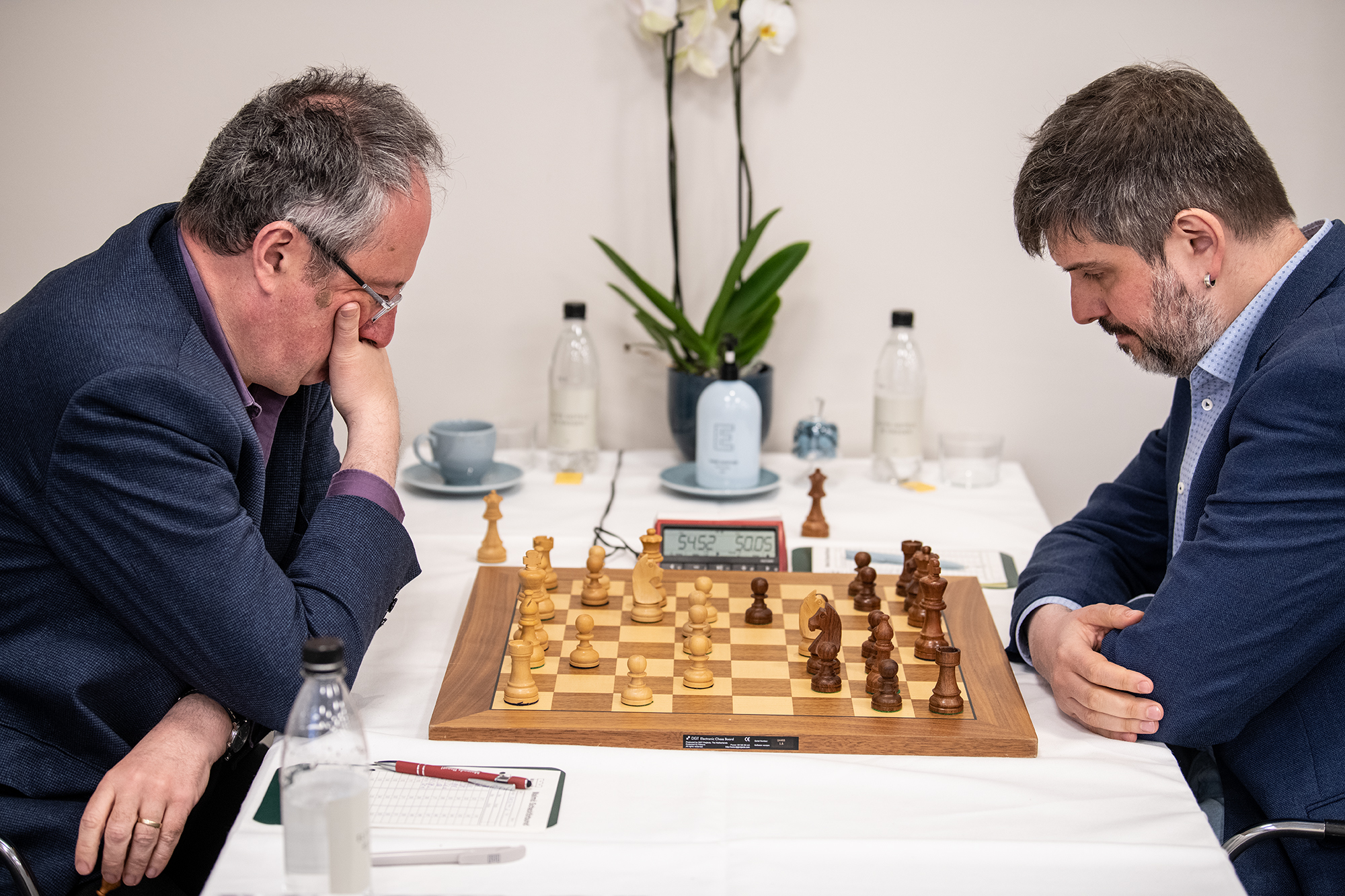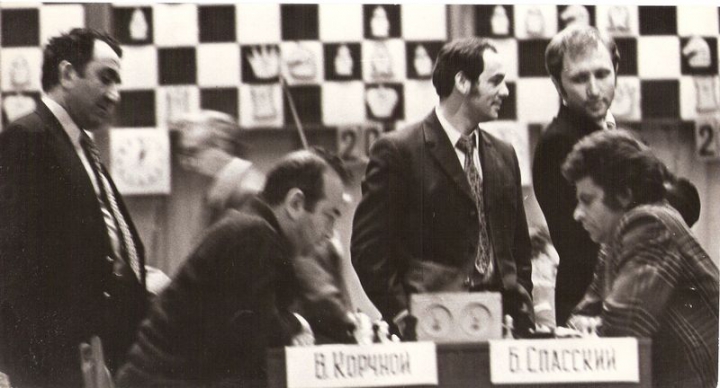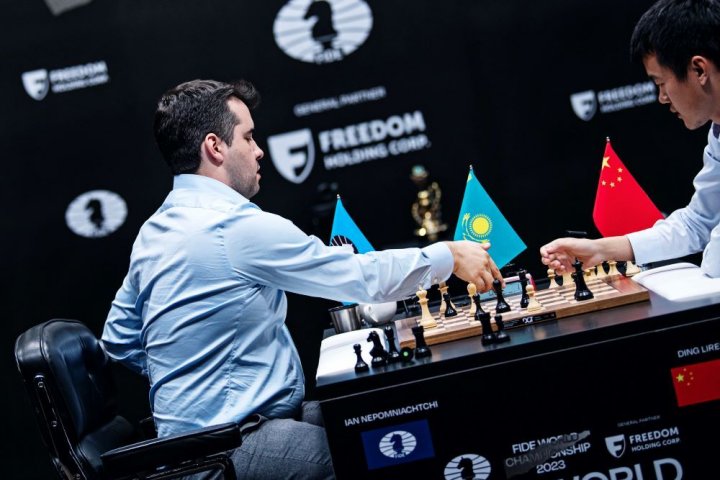Review by Nagesh Havanur
Even as I write these lines, the Julius Baer Generation Cup is drawing to a close with victory in sight for Magnus Carlsen. A number of leading players participated here and only one player was missing, Ding Liren, the recently crowned World Champion. Let us hope, he returns to the tournament scene soon.
This issue, in the main, deals with the world championship that culminated in his rise to the summit. This was a cliff- hanger and both players played with great determination. Ding Liren’s opening experiments (influenced by his second Richard Rapport) were a refreshing change and led to novel situations in which both players had to rely on instinct and improvisation. Inspired play on occasion was marred by terrible blunders. How well would this match compare with the world championship games in the Carlsen years is for discerning readers to judge. All the decisive games have been annotated in this issue.
Here is the Final Tie-break game annotated by Hou Yifan:
One move that evoked universal admiration in this game was 46…Rg6, Ding Liren allowing his rook to be pinned by the White queen. Hou Yifan offers it a moderate assessment. Black had to give in to perpetual check or take a chance with this move. Probably Ding Liren also saw that the White queen could not remain for ever on the b1-h7 diagonal. So it happened and the Black rook immediately became active once the White queen left the diagonal. Ding Liren won.
Svidler shines
This issue also includes all games from the traditional TePe Sigeman International Tournament at Malmö, Sweden . The event was won by Peter Svidler ahead of young players, Gukesh, Abhimanyu Mishra and Nils Grandleius. Veteran, Boris Gelfand suffered and ended up in the lower half of the tournament table. He was no pushover, though and Peter Svidler annotates his hard-fought game with him in this issue:

Gelfand-Svidler, TepeSigeman 2023 | Photo: David Llada
A Spassky Special

Spassky seen in action with Korchnoi, Petrosian watching the rivals in play | Photo: 64 Archives/ChessPro.ru
This issue also carries a special feature on Boris Spassky with 27 annotated games. The opponents include world champions, Fischer, Tal and Petrosian, not to mention GMs, Keres, Korchnoi and Larsen among others. Here is one of them. In this issue it has a commentary by Lubomir Ftacnik. I offer one more perspective based on contemporary analysis:
Spassky-Keres, Candidates’ Match 1965 (3)
There are more than 2600 games of Spassky in the Big Base alone. They are worth a look.
Opening videos and surveys
There are 3 opening videos in this issue:
The first offers an introduction to a "quiet" line in the Colle-Zukertort Opening (D04) that appeared in the recent world championship match by Mihail Marin.
The second presents analysis of a new line in the the Ragozin Defence (D38) by Spike Ernst.
The third examines a TN with a pawn sacrifice in the Catalan (D43) by Ivan Sokolov
Take your pick.
What is more, there are as many as 12 opening surveys ranging from the Italian to the King’s Indian. Among them I would single out the analysis of the Sicilian Poisoned Pawn Variation (B97) by Renato Quintiliano and the Staunton Gambit against the Dutch Defence
(A83) by Spyridon Kapnisis.
Besides opening surveys, this issue has standard features on tactics, strategy and the endgame. Here I would single out Karsten Müller’s demo. lecture on king and pawn endings. He is lucid and it’s a treat to learn the final phase of the game from him.
Last, but not least, we have Jan Markos’ demo lecture on the topic, symmetrical positions. Practical advice for the tournament player.
Summing up
The main database of the issue has 162 games of which 41 are deeply annotated.There is much else in this DVD that deserves to be explored. Apart from the players I have already mentioned, the commentators include Anish Giri, Wesley So, Sam Shankland and Van Foreest among others. It may be noted that there are more annotated games in the opening and training sections of this issue.
Well, practice makes perfect.
Notes:
1) Here is a link to the official site of the World Chess Championship
2) The official site of the Sigeman Chess Tournament also deserves a look:
3) There is a wealth of information on Boris Spassky in Douglas Griffin’s Blog on Soviet Chess History:
I have made use of the report on the Keres-Spassky Candiates’s Match 1965 by Tal and Koblenz in this review. Incidentally, the match was held in Riga, Tal’s home town.
4) The Sicilian Poisoned Pawn Variation made history in the game, Caruana-Vachier Lagrave, Candidates’ Tournament 2021. Subsequently improvements were found.
Renato Quintiliano covers the same ground and also deals with recent developments in other lines. The article in this issue is the first of the series.
Buy ChessBase Magazine #214 in the shop...

























